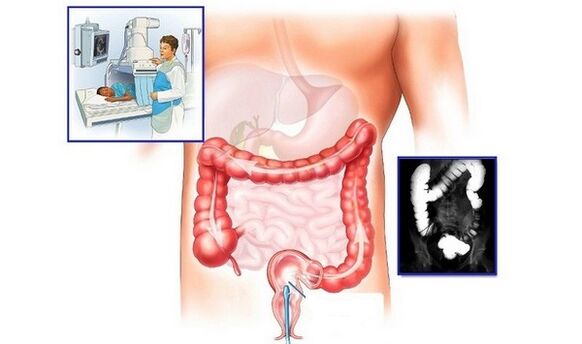
Hemorrhoids are diseases in which blood stasis and abnormal changes occur in the rectal veins or around the anus. This subtle pathology has no age and gender restrictions.
The underlying factor leading to the formation of hemorrhoids is stagnation, and stagnation is caused by a large number of other predisposing factors.
Pathological features are characteristic symptoms that a person cannot ignore. The most specific clinical symptoms of hemorrhoids are itching and burning in the anal area, rectal bleeding, and severe pain in the perianal area.
Clinicians will be able to make a correct diagnosis on the basis of physical examination, but in addition, some laboratory and instrumental examinations may be required.
The treatment of hemorrhoids directly depends on the severity of the course, which is why it can be conservative or surgical.
Since pathology has quite a few variants, it has multiple meanings in the International Classification of Diseases.
Cause
The main reasons for the appearance of hemorrhoids are:
- Violation of the vascular function of the organ;
- Increase arterial blood flow;
- Obstruction of blood flow out of the venous plexus;
- The rectal vein loses its tone, causing its dilation and the appearance of nodules.
In addition, clinicians have identified a large number of unfavorable factors that lead to the aforementioned process, which is why they are usually divided into several groups-pathology and physiology.
The causes of the first type of hemorrhoids include:
- Chronic constipation-hardened stool can damage the rectum and anal walls;
- Severe body poisoning-this should include poisoning by alcoholic beverages, toxic and chemical substances, and poor-quality food;
- Contagious massive diarrhea;
- Formation of malignant and rare benign tumors in the intestine;
- Pelvic organ diseases, such as prostatitis or cystitis;
- Inflammatory diseases of the digestive system;
- hormone imbalance;
- Portal hypertension and liver cirrhosis, as well as other diseases of this organ. The connection between hemorrhoids and the liver is due to the existence of a common vein;
- Pathological effects of pathogens that lead to the development of infections.
In addition to diseases and disorders, the cause of hemorrhoids may have nothing to do with the presence of one disease or another in the body. Among the physiological factors, it is worth emphasizing:
- Insufficiency of physical activity-which occurs in the context of various reasons-laziness, a serious disease that deprives the patient of mobility, and specific working hours in which a person is forced to sit or stand most of the time;
- Overweight
- Malnutrition-This includes the abuse of fats, spicy foods, bacon, candy, carbonated drinks, semi-finished products, fast food, and other harmful ingredients. It is for this reason that diet therapy is part of the treatment of hemorrhoids;
- Drugs of abuse, including laxatives or oral contraceptives;
- Incorrect performance of rectal diagnostic procedures or enema;
- Unconventional sexual preference, namely anal sex;
- The long-term effects of stressful situations;
- Engage in heavy physical activity;
- Engage in certain sports, especially biking or motorcycle riding, equestrian sports and other types of weightlifting;
- Excessive drinking and smoking;
- The period of childbirth or labor;
- menstruation.
Genetic susceptibility plays an important role in the development of diseases. Diagnosing a similar pathology in one of the nearest relatives greatly increases the likelihood of a mass. Knowing this, you can prevent the emergence of the disease independently, you only need to follow all the rules for preventing hemorrhoids.
Classification
According to its clinical nature, the disease is:
- Acute-this is the first manifestation of previously undiagnosed hemorrhoids;
- Chronic-characterized by alternating phases of worsening and disappearing symptoms.
According to the formation area of hemorrhoids, the pathology of cavernous body is divided into:
- External hemorrhoids-if the lump appears under the skin of the anus, not under the rectal mucosa. It is considered the rarest form of disease.
- Internal hemorrhoids are the most common pathological type, in which the vascular cone appears directly in the anal canal;
- Mixed hemorrhoids-the second most common disease, characterized by the presence of signs of the above two forms.
In addition, there are types of hemorrhoids, divided by severity:
- Mild course-Symptoms may be completely absent or unobvious. Conservative methods prevail in treatment;
- Moderate to severe-The difference is increased pain, which is caused by increased nodules and fecal damage. During the bowel movement, internal lumps will fall off, after which they will adjust on their own. The disease can be eliminated by minimally invasive methods;
- Severe-Shows signs of hemorrhoids such as bleeding. The nodules will not only fall off during defecation, but also in any other situation that causes the intra-abdominal pressure to rise. In this case, they can only be adjusted manually. Strategies for how to get rid of hemorrhoids can include minimally invasive surgery and extensive surgery;
- Complex-manifested as an increase in disease symptoms. During the diagnosis process, the development of complications is often observed, one of which may be thrombosis. But it should be noted that not all hemorrhoids are not treated in time, and there will be sequelae.

symptom
The first signs of hemorrhoids may be so small that people will not pay attention to them. The initial clinical manifestations are believed to be:
- Mild discomfort in the anus;
- Non-intense itching in the anal area;
- Pain during defecation;
- Swelling at the entrance to the anal canal.
As the disease progresses, the following symptoms of hemorrhoids will begin to manifest:
- Burning and intense itching;
- Pain worsens, not only during defecation, but also when walking vigorously or sitting for a long time;
- Blood and mucus impurities appear in the stool. It is worth noting that the pathological clot does not mix with the stool, but is located on the stool;
- Prolapse of hemorrhoids, causing severe pain;
- Redness of the skin in the perianal area;
- Rectal bleeding-If in the early stages, this sign of hemorrhoids can only be manifested in the form of smearing blood on toilet paper or underwear, then with the complicated process, the bleeding can reach the intensity of the flow. This is why people often ask for help.
In addition to the specific clinical manifestations, the above symptoms of hemorrhoids can also be supplemented by increased body temperature, which indicates the progress of the inflammatory process.
diagnosis
It often happens that when symptoms of disease appear, a person does not know which doctor to contact for treatment of hemorrhoids. Proctologists or surgeons are involved in the diagnosis and treatment of hemorrhoids, but you can contact the therapist for the first consultation. It should be remembered that if the child shows signs, it should be shown to the pediatrician immediately, and if it is a pregnant woman, the obstetrician and gynecologist should be consulted first.
The first stage of diagnosis includes the work of the clinician, the purpose of which is to:
- Detailed investigation of patients who first show signs of hemorrhoids-to determine the stage of disease progression;
- Not only familiar with the patient’s medical and life history, but also with his relatives-this is usually sufficient to determine the cause of hemorrhoids;
- An objective examination aimed at assessing the condition of the perianal area, as well as a digital examination of the rectum, will make it possible to distinguish between internal and external hemorrhoids and determine the location of the mass.
The second stage of establishing the correct diagnosis is laboratory tests, namely general, biochemical blood tests and coagulation charts.
The last part of the diagnosis is an instrumental examination of the patient to assess the appearance of hemorrhoids and provide:
- Sigmoidoscopy;
- Anoscopy
- Colonoscopy
- Radiography using contrast agents;
- Ultrasound examination of abdominal organs.

Only after studying the test results can clinicians formulate strategies for treating patients with hemorrhoids.
treatment
The treatment plan for the disease will depend on the severity of the disease, but common methods of treating hemorrhoids include:
- Use drugs to achieve local and systemic effects. In the first case, rectal suppositories, ointments, creams and gels are used, in the second case-tablets to improve blood circulation, strengthen veins and neutralize the accompanying symptoms;
- Adhere to a diet-both external and internal hemorrhoids are shown. All suggestions on menus and cooking methods are provided by the attending doctor;
- Minimally invasive technique to remove hemorrhoids;
- Open surgery
- Use alternative medicine formulations. This should include candles and ointments made from natural ingredients at home, as well as herbal and plant decoctions, for ingestion or as microenemas and sitz baths.
Among the minimally invasive methods of treating hemorrhoids, it is worth emphasizing:
- Directly introduce the hardening substance into the node;
- Ligation with latex ring;
- Infrared and electrocoagulation;
- Freeze damage
- Degreasing.
The strategy for removing hemorrhoids will depend on the pathological stage.
Due to the ineffectiveness of conservative methods, and in the case of complicated disease processes, open surgery-hemorrhoidectomy is required.
How to treat hemorrhoids in pregnant women and children will be prompted by obstetricians and pediatricians.
Possible complications
Ignoring the obvious clinical phenomena and the late treatment of hemorrhoids often leads to the development of the following consequences:
- The addition of secondary infections;
- The spread of the inflammatory process;
- Anal sphincter insufficiency;
- Heavy bleeding causes anemia;
- Proctitis and paraproctitis;
- The formation of blood clots;
- Anal fissure.
Prevention and prognosis
In order to prevent the appearance of hemorrhoids, the following prevention rules must be observed:
- Lead a healthy and moderately active lifestyle;
- Eat in an appropriate and balanced manner;
- Strengthen the pelvis and abdominal muscles;
- Take medication only as directed by your doctor;
- If possible, avoid physical and emotional stress;
- Deal with the pathological causes of hemorrhoids such as constipation in time;
- Ensure that the weight is within the normal range;
- Receive a comprehensive physical examination on a regular basis.
It is impossible to definitively answer the prognostic question of hemorrhoids, because the outcome depends on several factors-the stage and form of the disease course, age category, time to start hemorrhoid treatment, and patient compliance with treatment. All recommendations from clinicians.
People who are often diagnosed with hemorrhoids will ask if it can go away on its own? The doctor's answer is always negative-the disease will become a chronic disease.
























